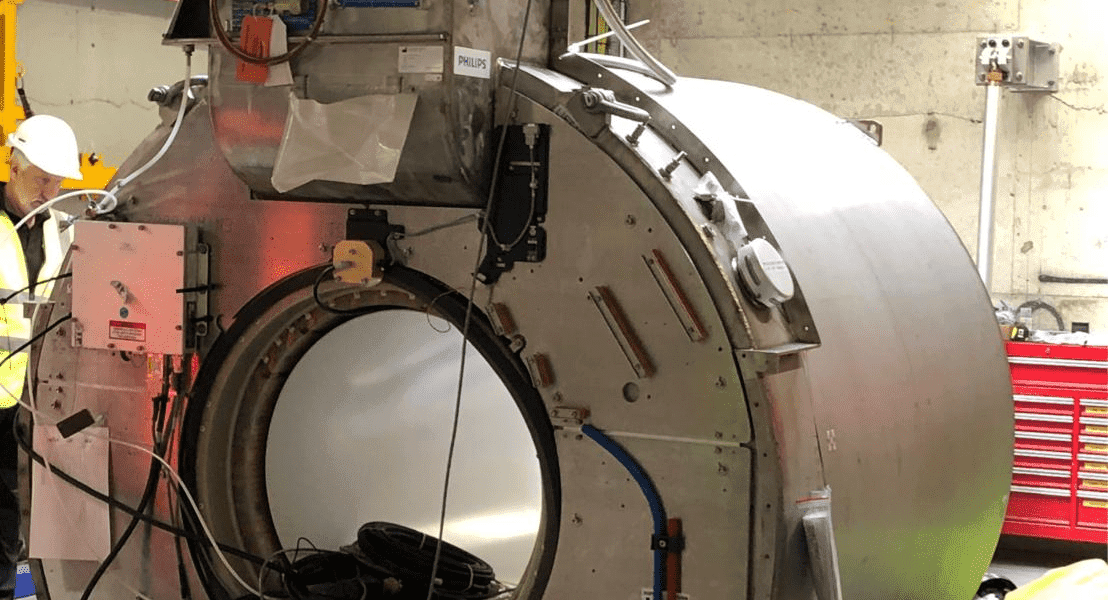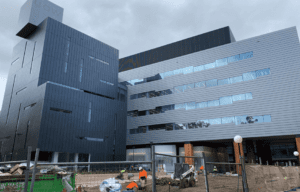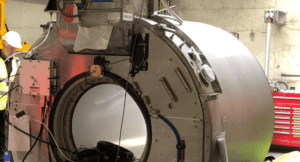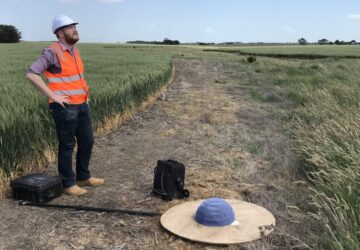
Control of EMF for sensitive equipment
As a values-driven consulting business, Resonate Consultants places emphasis on offering distinctive and responsible services. In addition to our vibration consulting and acoustic engineering services, we also deliver EMF assessment and mitigation services.
With the ability of electromagnetic fields (EMF) in the extremely low-frequency range to impact sensitive health and medical research equipment, we are proud to have developed and honed our approach to assessing and mitigating EMF.
Offering leading-edge advice and services, the team, led by Tom Evans, Director of Consulting, have consulted and worked on a number of significant projects ranging from the Metro Tunnel Project to Molecular Horizons, the University of Wollongong’s dedicated research facility.
We have also consulted on new medical imaging equipment installations across Australia and New Zealand to ensure the equipment can be installed and utilised without electromagnetic interference (EMI) arising from sources such as electrified public transport systems.
‘EMF can be caused by common things such as lifts and building electrical services,’ Tom Evans explained. ‘The biggest concern we see today is electrified transport systems. In some cases, research equipment such as electron microscopes are so sensitive that even general traffic on nearby roads can cause EMI,’ he added.
The implications of negatively impacted medical and research equipment are far-reaching. Sensitive electron microscopes are a significant investment for research institutions and EMI can degrade image quality, hindering research outcomes. For MRIs, reduced image quality could affect the ability medical treatment decisions.
Given the extreme sensitivity of some research equipment, it could make sense to locate the equipment in rural and remote locations. However, this is rarely a practical outcome as there are benefits to co-locating them in existing urban and new build research institutions and medical facilities. ‘The equipment is generally part of a broader research program and you would reduce the ability for collaboration by not co-locating. As such, it is generally necessary to incorporate EMI mitigation into the building design to allow the facilities to be located in urban areas,’ Tom said.
Our specialist approach to research equipment combines assessing the impact of existing EMF against the requirements that each piece of equipment has and then suggesting mitigation techniques in collaboration with the design team and users. These suggestions might range from advising on appropriate placement of the equipment, making design changes before facilities are built to incorporating EMF shielding into the space. ‘EMI-sensitive equipment is also typically sensitive to vibration and noise,’ Tom said. ‘As such, we are able to offer a service that considers all environmental risks that might apply in the design of these facilities.’
In addition to providing assessments and advice, we have also cultivated a relationship with Field Management Services from the US, who are recognised for their expertise in designing shielding and mitigation for EMF for sensitive equipment.
EMI solutions
In terms of attenuation for EMI, there are two primary solutions. Firstly, passive shielding. Involving specialist material sourced from overseas, passive shielding is essentially metal shielding that is placed around equipment to attenuate existing EMF to a level that is low enough for equipment to function. The design and composition of the shielding will vary depending on the application.
Secondly, there is active shielding. Not too dissimilar to headphones with active noise control, this EMF solution involves sensing an EMF disturbance and encompasses multiple steps. EMI disturbance at the position of the sensitive equipment needs to be measured before a system of electrically controlled coils is put in place. Complete with an active control system; this effectively emits the opposite wave in order to compensate for EMF.
‘Each solution has its pros and cons,’ Tom explained. ‘It’s about understanding what the user’s needs are, the project constraints and ensuring that we put the right technique, or techniques, in place.’
This multi-faceted approach to EMF has ensured that our experience and capabilities have expanded. ‘Our initial involvement was really around helping purchasers of sensitive equipment to look where they can best site it. Now we consult on public transport infrastructure near research precincts and help new hospitals understand how to plan their layout if they are located near rail systems,’ Tom said.
Expanding into quantum computing
Another area our reach is expanding into is that of quantum computing. This is an increasingly relevant topic with quantum research facilities requiring greater levels of EMI control. However, it can be a complex endeavour given it is a rapidly developing area with ever expanding needs for a stable environment.
While an intricate area of consulting, assessing and accounting for EMF is becoming increasingly paramount. With transport infrastructure only growing, a delicate balancing act is needed. Our distinctive approach, which is underpinned by acting responsibly, ensures that transport means can grow and develop whilst considering nearby medical and research facilities and their associated equipment.
‘This is a really complex area. We are ultimately trying to simplify the language and associated processes so people can understand it as best they can. Having consulted on a large number of facilities around Australia now, we understand the different EMF approaches, outcomes and priorities. As independent design consultants in this area, we just want the best outcomes for the users of this sensitive medical and research equipment,’ Tom said.
For dependable EMF advice, speak to one of our acoustic consultants today.






